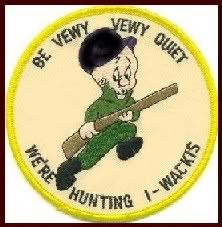Re: stalking silently ?
<div class="ubbcode-block"><div class="ubbcode-header">Originally Posted By: LoneWolfUSMC</div><div class="ubbcode-body">Never worn Moccasins but my field boots always had decent enough feel to tell if I was about to drop my weight on a stick or branch.
Moving quietly through brush is all about paying attention, taking your time and moving carefully.
If there is a branch in your path, is it going to hang on your deuce gear or ruck? If so, move it and let it back gently. If you set your foot on a stick, make sure you have enough balance that you are not committed to that step. You need to be able to lift and reposition your foot before placing your weight on it.
YEARS of moving in the dead of night teaches you what you need to know.
I will say that initially it takes a hell of a lot more energy to move quietly in the woods than it does to bust brush. However once you get it, it becomes second nature.
Moving quietly has tactical applications, but really it's more than that. It's about belonging there. Crushing through the woods makes you an "outsider". Ghosting through quietly gets you much closer to the creatures who live there. </div></div>
Quote for truth. My deer hunting success rate went way up once I learned that. Watch your step, plan each one, and stop every so often and just listen, take a look around, see motion.
When you know the environment, and you're making only noises that fit in, you'll notice when something is "off" about it. Like the odd faint swishing sounds a heavy, mid-rut, 5x5 whitetail buck makes when he drags his feet in old winter grass.
Or the sudden silence when suddenly everything freezes, and you know there's another predator nearby. Like the young mountain lion who is not hunting, but just cruising through on his way to parts elsewhere, or the small pack of mother and pup coyotes.
Or, most amusingly yet, and most irritatingly, when you're watching a few does and a small buck, too small to take home, and the woods go silent, they disappear with a nervous flick of the tail, and another hunter comes trudging through. Swish-swish-swish with every step in his modern ultra-polymer-shiny-high-tech gear, crunching leaves and sticks underfoot...and never realizing that you're there, not 20 feet away, when he stops for a piss.
Then you know you're different, at a different level, in tune with your world in a way they've never even thought of. That's when you know you've taken the first steps to become a better predator.
Then other times you'll be humiliated. One grey, snowless winter day, looking away, then back, at a clump of brush around a stump and seeing a faintly different shape to it in the evening's half light, it took me a moment to make out the problem. Then a pair of cat ears, a pale grey face, and dark-rimmed slanted eyes took shape in my binoculars, and I realized a lion, perhaps the same I saw earlier that year, was now watching me.
I'd looked at that stump not ten minutes before with the binoculars, and nothing was there. I looked away for no more than two or three seconds, and the thick brushline behind it was a good twenty feet away. How that lion got there I'll never know, unless somehow I just didn't see him slip into that little clump, and he'd been peeking at me all along.
It's fun practice, regardless of your prey or environment, and a very rewarding experience when you become a part of the surroundings and the natives accept you as a natural thing.




